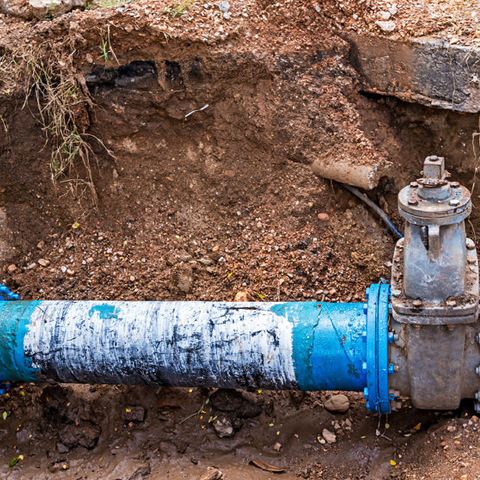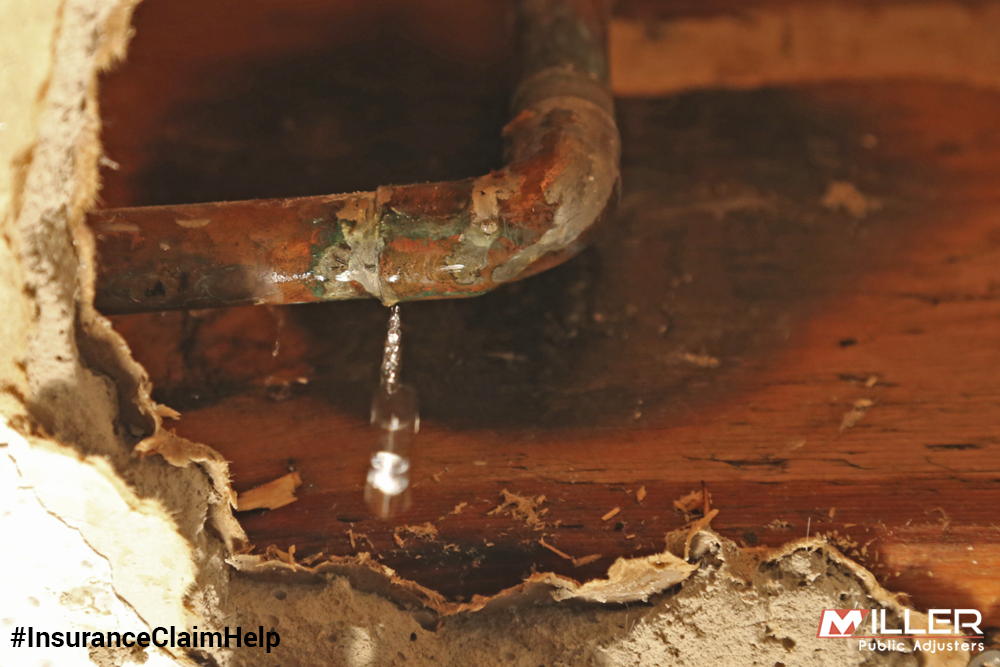What to Promptly Identify and Effectively Fix a Burst Pipe
What to Promptly Identify and Effectively Fix a Burst Pipe
Blog Article
The article following next in relation to What to Know Before Installing a Dishwasher is seriously fascinating. You should take a peek.

A ruptured pipeline is a major emergency; you can just stand as you view water you pay a lot to reunite with the earth. In worse cases, you discover a swimming pool on your kitchen floor, which is a fantastic trip hazard, particularly if you have children around. If the pipe that ruptured was in your wall surfaces, bad news: you might require to repaint that entire section.
Just how can a disaster like a burst pipe be protected against as well as managed? Well, by listening to your expert emergency plumbings and following these guidelines.
How do I understand when my pipes have burst?
Varying water stress
Pipes do not simply burst in a day. You might have seen that your kitchen area tap or shower does not run promptly when you turn the tap. It may stop for a couple of seconds and then blast you with even more force than usual.
In various other instances, the water might seem regular initially, after that drop in pressure after a few seconds.
Damp wall surfaces and also water stains
Before a pipe bursts, it will leak, many times. If this consistent leaking goes unnoticed, the leak may graduate right into a vast gash in your pipeline. One very easy means to prevent this emergency is to keep an eye out for damp walls ad water spots. These water discolorations will certainly lead you right to the leak.
Puddles under pipelines and also sinks
When a pipeline bursts, the outflow forms a puddle. It may appear that the pool is expanding in dimension, and also no matter the amount of times you wipe the pool, in a couple of mins, there's another one waiting to be cleansed. Usually, you may not have the ability to map the puddle to any visible pipes. This is an indicator to call a professional plumber.
Untraceable dripping noises
Pipeline bursts can happen in the most undesirable locations, like within concrete, inside walls, or under sinks. When your house goes quiet, you might be able to listen to an irritatingly persistent dripping sound. Even after you've inspected your shower head and also cooking area faucet, the dripping may continue.
Dear visitor, the trickling may be originating from a pipeline inside your wall surfaces. There isn't much you can do about that, other than inform a professional plumber.
Shut down the Water
When water ices up, it broadens in quantity by concerning 9 percent. And it broadens with significant force: The pressure inside pipes may go from 40 pounds per square inch to 40,000 psi! No pipe can hold that much pressure, so it bursts. The break may take place where the ice forms, yet more frequently, it happens where water stress finds a weak point in the pipeline. That may be inches or perhaps feet from the frozen location. Find the water shutoff valve as well as shut off the water to avoid more damage. You might additionally need to shut down the electricity also, depending on where the leaks takes place and exactly how huge it is.
Contaminated water
Lots of people presume a ruptured pipeline is a one-way outlet. Quite the contrary. As water drains of the hole or gash in your plumbing system, pollutants find their way in.
Your water might be contaminated from the resource, so if you can, check if your water storage tank has any kind of issues. Nonetheless, if your drinking water is provided and purified by the city government, you should call your plumber right away if you see or smell anything amusing in your water.
What do I do when I identify a burst pipe?
Your water meter will certainly continue to run also while your water wastes. To decrease your losses, discover the major controls and turn the supply off. The water mains are an above-ground structure beside your property.
How to Fix & Detect a Leaking Pipe
How Do I Know if a Pipe is Leaking?
Leak detection tests can help you determine if your pipe has a leak. Even if you don’t see an apparent leak, you should still conduct leak detection tests regularly to save water and money—and prevent major damage to your home.
Water meter. It can be helpful to figure out what your usual water meter usage numbers are and then monitor them regularly. To monitor your meter, first, turn off all water faucets in your home. Check the meter and write down the numbers. In a few hours, check the meter again. If the numbers have changed, you have a leak. Water gauge. Use a water gauge to test your water pressure. Your showerhead should produce a certain amount of water pressure based on its model and design. If the pressure is lower than it is supposed to be for that specific showerhead, your home likely has a leak. Puddles. Look inside your bathroom, laundry, and kitchen sink cabinets. Puddles around the cabinets or around toilets, tubs, showers, and washing machines indicate the presence of a leaking pipe. You may also notice loose tiles, peeling or flaking paint, or mold caused by water accumulation. Napkin test. Even if you don’t see any puddles, you may still have a leak. You can test for water leaks in the bathroom, laundry, and kitchen by wiping below-sink connections with a napkin, paper towel, or piece of toilet paper. If it becomes damp, you probably have a leaking pipe under the sink. Discolored walls. Walls that are discolored—usually with brown or yellow stains—or bulging might mean that they have been impacted by water damage caused by a leaking pipe. Smell. A leaky pipe will create sitting water, and over time, that water may develop a musty smell. If your home smells musty, but you can’t locate the source, it may be due to a leak. Steps for Fixing a Leaking Pipe
A leaky drain can be remedied by tightening the pipe base, replacing the drain seal, caulking the rim, and tightening the pipe nut. Similarly, a leaking toilet pipe can be treated by tightening the packing nut. You may also need to replace the valve. A leaky faucet may just need tightening or replacement of the washers. If that doesn’t work, consider replacing your faucet. If your pipe has a hole in it, you may want to use a pipe leak sealer or pipe leak tape. This quick fix for water pipe leaks can also temporarily fix a copper pipe leak. https://www.ahs.com/home-matters/quick-tips/how-to-tell-if-pipes-are-leaking/

As an avid person who reads about How to install a dishwasher safely, I was thinking sharing that information was beneficial. Please take a moment to share this blog posting if you liked it. Thank-you for your time spent reading it.
Plumbing insights available. Report this page